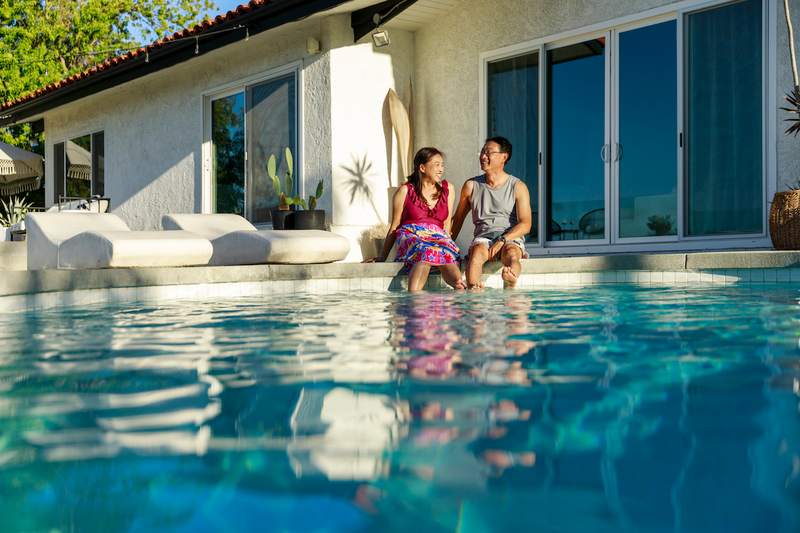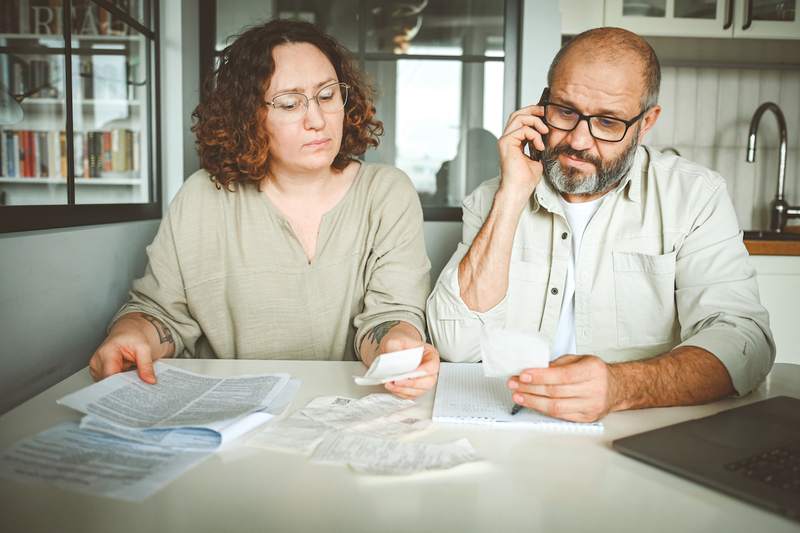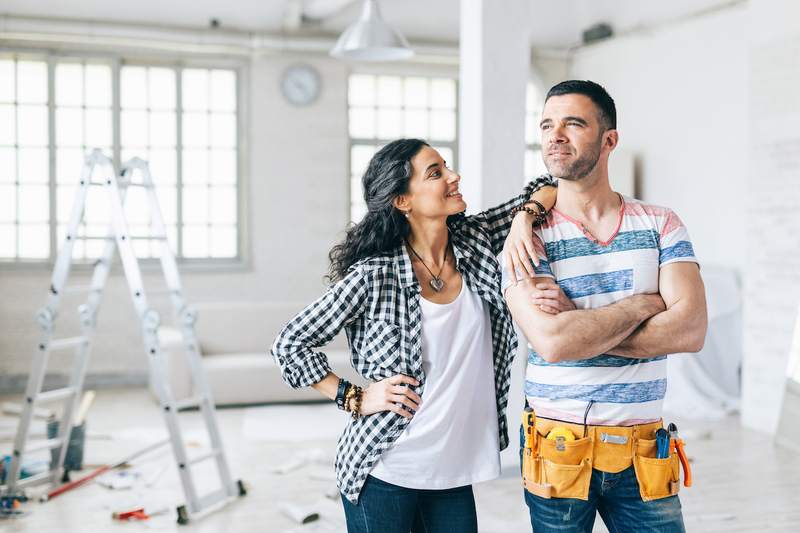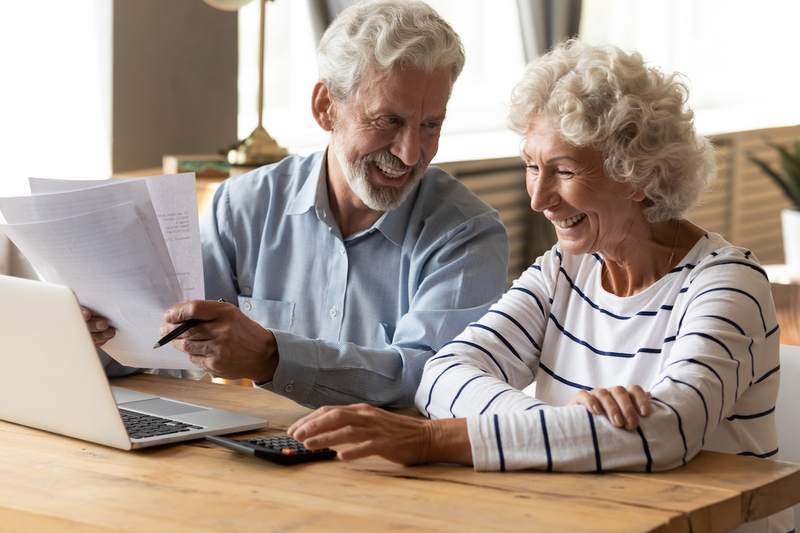Even if you’ve never stayed in one, chances are you’ve heard about Airbnb. With more than 6.6 million live listings, Airbnb is the most popular short-term rental platform in the world. It allows travelers to book overnight stays in various types of homes — even treehouses — as an alternative to traditional hotels or motels.
Many properties on Airbnb are owned by individuals, known on the platform as hosts, who have converted their primary, secondary, vacation, or even investment homes into revenue-earning rentals. Since its launch in 2008, Airbnb has allowed its hosts to earn a combined $180 billion in rental income.
If you’ve ever wondered how to host your home as an Airbnb, or you’re curious about what’s involved in becoming an Airbnb host, here are 25 steps to take in reaching that goal.
Key Takeaways:
- Before becoming an Airbnb host, it’s important to properly evaluate your home and its earning potential.
- Preparing and listing your home are key steps in finding Airbnb renters and generating short-term rental income.
- Maintaining a profitable Airbnb property involves limiting expenses and marketing your property.
Getting Started
Before jumping in as an Airbnb host, you’ll need to spend some time considering your goals for the property. This means determining what your home requires to be successful on the platform, which steps you should take to protect yourself, and how much you might be able to earn as a host.
1. Evaluate your home
You may love your home, but will it make for a good short-term rental property?
Really sit down and evaluate your home. Consider what it offers — accommodations, space, interesting features, location, etc. — and its appeal to potential renters. This will help you decide how to market the property, what to charge, and even how to decorate for renters.
2. Do your research
Once you understand what your home offers, do some research into how those features translate on Airbnb. This might mean searching for other properties in your area, comparing your home to listings by nearby “superhosts” — top-rated hosts on the platform — and seeing how your target price stacks up against what hosts are charging for comparable rentals.
3. Make sure rentals are legal where you live
Not all homes can be Airbnbs. You may find that short-term rentals are banned by your county, city, or homeowners association. Or, if they are allowed, there may be many hoops to jump through to ensure that your property is legal. This is arguably the most important step before listing your home.
“Depending on your city, you may need to get a business license or special permit, or need to register for a different tax rate,” says Lukas Krause, CEO of SkyRun Vacation Rentals in Broomfield, Colorado. “Regulations are becoming more and more commonplace for vacation rentals, and fines can be high for those who don’t follow the rules. Plus, those who don’t follow the rules can often make a bad name for the many, many STR owners who are good neighbors and community members.”
To avoid making enemies of your neighbors, risking fines and penalties, or even having your Airbnb rental business shut down, be sure that you’ve checked all the legal boxes involved in listing the home.
4. Run the numbers
Once you’ve confirmed that you’re allowed to list your home as a long- or short-term rental, it’s time to figure out how much you need to charge to cover your expenses. Be sure to account for costs such as:
- Monthly mortgage payments — including interest.
- Private mortgage insurance.
- Landlord insurance or homeowners insurance premiums.
- Utilities (electric, water, natural gas, etc.).
- Fees (HOA, neighborhood facilities, parking, etc.).
- Cleaning service between renters.
- Management services.
- Applicable property taxes, permits, and local fees.
Airbnb charges fees to hosts for each successful rental, usually in the neighborhood of 3% of the subtotal paid by the renter. Be sure to account for this expense, as well.
If your home isn’t ready to be rented, you’ll also want to account for the cost of furnishing and supplying the property. While some of these expenses will only happen once, others — like toilet paper, replacement bedding, toiletries, and welcome gifts — can be recurring. And it’s always wise to factor in unexpected costs, like replacing the fridge or washing machine when they go out.
There are soft costs to keep in mind, too, says Kit Steen, vice president of sales at Grand Welcome, a national luxury vacation rental company based in Torrance, California.
“New hosts often underestimate the value of their time and the amount of effort required to manage a rental property effectively,” Steen says. “It’s important to consider the time spent on tasks such as guest communication, property maintenance, and administrative work when evaluating the overall profitability of hosting.”
5. Set your financial goals
What’s your plan for the property? Do you want to create a monthly cash flow that boosts — or even replaces — your current income? Or do you just want to slowly pay off your mortgage with rental revenue, building home equity over time?
Setting financial goals will help you decide not only how much to charge as a host, but also how many nights per month you need to rent out the property to meet those goals.
6. Get insurance
If you have a mortgage on your property, you’re probably required by your lender to maintain insurance on the dwelling. Even if you aren’t required to have insurance, though, it’s still a wise purchase in most cases.
Depending on how the property is categorized and its use category, you may want to choose either a homeowners insurance policy or a landlord insurance policy. This coverage can protect the dwelling against unexpected damage or loss; protect your belongings within the home, including appliances, furniture, and more; and protect you against liability when others are on the property.
Airbnb also offers $3 million in damage protection and $1 million in liability coverage to hosts automatically. This coverage is intended to protect against liability — say, if someone is injured on the property — or property loss.
“Failing to secure appropriate insurance coverage can leave hosts vulnerable to financial losses in case of accidents or damage,” Steen says.
7. Decide on an audience
Airbnb lets you tailor your property to a specific market or audience, and even set a theme for the property if you want to. This might play on local attractions, such as a baseball-filled condo near Fenway Park in Boston, a seaside oasis three blocks from the beach, or this “Game of Thrones”-themed home in Lexington, Kentucky.
Is there an audience for which your home is best suited? Do you want to attract families, solo travelers, young groups, or couples? Would your home be popular among traveling nurses due to its proximity to a hospital, or are you likely to rent out your backyard bungalow for girls weekends?
Now is the time to figure out whom your ideal renter might be.
8. Set your price
You’ve done the math on your expenses, researched what your home will likely fetch in your area, and decided how much you want to earn as a host. Now, it’s time to set your price on the platform.
Don’t forget to account for Airbnb fees in this amount; there’s no charge to list a property on the platform, but Airbnb will collect a 3% fee for each successful booking. In some cases, there may be optional promotions you can add that will encourage new bookings but also eat into your profits — so keep those in mind, too.
9. Decide on house rules
Your house, your rules. A clear set of guidelines can make your life easier, protect your property, and even make your guests’ stay go more smoothly.
When coming up with your house rules, consider the following:
- Local ordinances surrounding occupancy, noise, parking, trash, etc.
- Personal preferences on allowing pets in the home.
- Special quirks or details specific to the home, like remembering to lock the trash cans at your mountain cabin so bears can’t rummage through them.
- How you want the property maintained.
There’s no right or wrong here, and the house rules will vary from one property to the next. You may find that your rules change over time, too, based on guest experiences.
10. Set check-in and checkout times
Just like at a hotel, your guests are expected to begin the check-in process after a certain time and check out before a certain time. This helps you manage turnover and get the unit cleaned between bookings, as well as set guidelines for each day of the booking.
If you don’t choose specific times or aren’t sure what to pick, you also can go with Airbnb’s default settings: 3 p.m. local time for check-in and 11 a.m. for checkout.
11. Set a cancellation policy
Life happens, and guests may find themselves needing to cancel a booking due to trip changes, family emergencies, or other reasons. Protecting yourself with a cancellation policy allows your guests to make changes as needed, without leaving you with an unexpectedly vacant property at the last minute.
Airbnb has standard cancellation policies to choose between, ranging from flexible — which allows guests to cancel without penalty up to 24 hours before check-in — to strict, where cancellations must be made within 48 hours of booking and more than 14 days before the stay for a full refund.
Preparing Your Home
Now that you’ve done all the nitty-gritty work, it’s time to actually prepare your home for an Airbnb listing.
12. Furnish it well
If you want to attract well-paying guests and earn great reviews, your property will need to be well furnished.
Keep guest comfort and convenience in mind here. You’ll obviously need basic furniture — beds, couches, tables, chairs, TVs, etc. — in a welcoming aesthetic, even if it’s not themed. Comfortable beds, bath towels, and pillows allow guests to relax.
A well-stocked kitchen with tools and standard appliances will make guests feel right at home, too. You don’t have to include dishes and silverware, but things like can openers, spatulas, and corkscrews feel like a lifesaver when you’re on vacation and they’re needed.
Little features — like bicycles or beach chairs that guests can use — are a nice added touch, and can leave a lasting impression.
13. Stock up on amenities
You choose the amenities you want to offer. Some, like toilet paper and trash bags, should be a given. Others, like shampoo and conditioner, are optional.
Some amenities to consider include:
- Cooking supplies (oil, sugar, salt and pepper, spices, and foil).
- Pots, pans, and baking sheets.
- Dish soap, cleaning supplies, and laundry detergent.
- Extra toilet paper and paper towels.
You may want to leave snacks or things like tea and coffee in the pantry, or even prepare a welcome basket for your guests.
14. Get it cleaned
Just like when staying at a hotel, your guests will expect a clean property when they arrive.
You may prefer to clean the home yourself between bookings, but many hosts hire a cleaning service instead. You can add a one-time cleaning fee to your listing to have guests pay some or all of the cost.
Airbnb has a cleaning handbook, which outlines the cleaning tasks that must be completed between each booking. The initial cleaning and subsequent turnover cleanings should involve:
- Washing bedding and making beds.
- Washing and folding guest towels.
- Vacuuming, sweeping, and mopping floors.
- Cleaning and disinfecting bathrooms, the kitchen, and common spaces.
Posting Your Listing
It’s an exciting time when your property is ready to go live. Here are the final steps you need to take.
15. Set up your account and profile
Setting up a host account on Airbnb is free and relatively simple.
You’ll sign up using your email address, phone number, or existing account through Facebook, Apple, or Google. Once verified, you’ll enter your name, address, and contact information to get going. Airbnb also requires you to submit a copy of a government-issued ID for identity verification.
In many cases, you’ll be matched with a local superhost who can answer questions before you go live. Once you’re confirmed and ready to start hosting, you’ll be able to add your property to the platform.
16. Take photos
Great photos can really sell your property to potential renters and showcase the home’s unique features. If you’re unable to take good photos on your own, consider hiring a professional photographer the first time around.
“One of the most important factors when it comes to marketing a short-term rental is photography,” Krause says. “Professional photos can make an enormous difference in helping your property appear at the top of searches and appeal to potential travelers.”
17. Write and rewrite your listing
Your listing is the first peek that guests will get of your home. Do your best to entice them to book.
When writing your listing, be sure to include fun details, amenities, local attractions, key features of the home, and what makes your listing better than others in the area. You also may want to include reviews from previous guests, if you have them.
18. Get verification
Airbnb requires property verification before your listing goes live and guests can begin booking. This safety step can be completed by:
- Sharing your GPS location with Airbnb from a mobile device.
- Uploading a listing photo.
- Sharing identifying documents such as a utility bill or mortgage statement for the property.
- Receiving and confirming a unique code via snail mail to the property address.
19. Post it
Now, all that’s left is to post your property. Once you’ve been verified, double-checked your description and pricing, and updated your calendar availability, it’s ready to go live for potential guests.
Finding and Keeping Renters
Airbnb can help market your property to new renters, especially if your listing has never had a booking before. Keeping renters happy is an important step toward your continued success.
20. Respond immediately to messages
Be sure to respond promptly to messages from new and potential guests. Answer any questions they may have about the property or your policies. This ensures everyone is on the same page and feels great about moving forward with a booking.
21. Use automation
You can individually confirm each booking request or instantly book guests as soon as they confirm dates. With automation, the process is very hands-off. Just be sure that your availability calendar is kept up to date.
22. Optimize for search engines
Search engine optimization can help your property pop up in relevant searches and be more visible to guests. Consider adding keywords that apply to your property in the title and listing description. These could include nearby attractions, amenities you offer, or features of the property, such as a pool or game room.
23. Market your listing
Aside from optimizing your listing on Airbnb’s search platform, you can market it through social media channels like TikTok, Instagram, and Pinterest. If your budget allows, you also can use management companies or vacation rental websites to further promote the listing.
The more popular your property becomes — thanks to bookings and positive reviews — the higher it’ll rank on search results pages within the platform.
24. Consider discounts and special packages
Everyone loves a deal. Discounts and package offers can entice guests to rent your property, especially if it’s brand-new and you’ve had no previous bookings.
Airbnb makes this particularly easy for new properties, with a 20% discount promotion on stays of three days or more. You also can add promotions for longer stays, last-minute bookings, early bird reservations, and more.
25. Encourage positive reviews
Guest reviews help potential renters feel more comfortable about choosing your property, and help your listing rank higher in Airbnb searches. So, positive reviews from past bookings are valuable.
To encourage reviews, be sure to leave your own review of guests within 14 days of checkout. This will trigger an email reminding them to submit their own review. You also can reach out after the booking ends to ask how their stay was and remind them about how important reviews are to you.
FAQ: How To Turn Your House Into an Airbnb
Here are answers to some common questions about turning your house into an Airbnb rental.
Airbnb automatically collects a fee from successful bookings, which is typically 3% of the booking subtotal. Fees may be higher for hosts in other countries or for those with very strict cancellation policies.
Yes, you can rent out your own home on Airbnb. You can choose to rent out a single bed, a private room, a separate guest space, or the entire home to guests, depending on your own needs and the layout of the space.
The best way to start an Airbnb with no upfront investment is to use a space you already have. This could mean listing a furnished guest room in your home, or even listing your entire primary home for guests to enjoy. As long as the property is furnished and has the necessary amenities, this can be a great way to get started with little or no money.
The Bottom Line on Turning Your Home Into an Airbnb
Becoming an Airbnb host can be lucrative, especially if you have a home in an in-demand area or with unique features. There are many steps you may need to take prior to turning your home into an Airbnb, such as checking local regulations, gathering necessary permits, photographing the property, and furnishing it for guests. Once you’ve completed those steps, though, Airbnb gives you a trusted platform for earning revenue from a primary, secondary, vacation, or even investment home.






